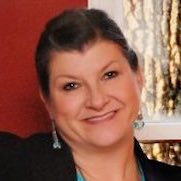3 minutes
A big vision undergirds the successful ‘Rogue Rewards’ loyalty program.
$1.6 billion Rogue Credit Union, Medford, Oregon, launched its loyalty strategy program in 2008 with the aim of “creating the most loyal members in the nation.”
“Everything would tie back to our Net Promoter Score, and all decisions would fit through three pieces of a loyalty filter,” explains CUES member Krista Jantzer, VP/marketing. “These were to create and keep promoters of the credit union, drive good profits, and expect and reward member participation.”
It was this last component of the loyalty filter that would include a patronage dividend.
“When we launched the program, it was always a long-term strategic objective to reward members with a patronage dividend,” adds Jantzer. “But when the financial collapse occurred, the dividend was put on hold but never lost sight of.”
Revitalized in 2016 as part of its new “Rogue Rewards” program, the credit union paid its first patronage (“loyalty”) dividend in February of that year for members in good standing, including minors. The credit union sent mailers to members introducing the program, stating the amount of their dividend and including account disclosures.
The loyalty dividend will be paid only when the credit union has the appropriate earnings and net worth to do so, notes Jantzer. Additionally, the dividend amount is based on the member’s loan, deposit and transaction activity, with thresholds in place on both the loan and deposit side to ensure an equitable payout, though there is no specified dividend cap.
To date, there have been two payouts: in 2016, $2.5 million and in 2018, $4 million. In 2018, 116,000 members qualified for a payout (87% of the membership), and dividends ranged from 13 cents to $671, with an average payout of $32. In 2016, 81,175 members qualified for the payout (83.7% of the membership), and dividends ranged from 11 cents to $571, with an average payout of $30.
Jantzer believes the program’s success lies in this differentiation: The CU establishes a separate “ownership account” into which a member’s payout and other earnings from the Rogue Rewards program are deposited. The ownership account currently earns an exceptional 4.0% APY.
“They can withdraw funds at any time but can’t put funds back in; any new funds must be earned,” through the Rogue Reward program, adds Jantzer. “We also discovered a member resilience aspect to the account, reducing the impact of other savings and loan rates, because of the account’s higher yield.
“The idea is that because we do have this high-yielding account available for members to participate in, it creates a resilience aspect when we aren’t able to offer higher savings rates or lower loan rates,” she explains. “Members are less likely to be potentially upset because we offer great value with the ownership account.”
For additional Rogue Rewards, members can participate in Dividend MAX, and have monthly earnings from any deposit account (including certificates) deposited into their ownership account. The credit union’s youth program, Rogue Rangers, is connected to Rogue Rewards as well, offering monthly and quarterly incentives for kids.
One of the most popular Rogue Rewards benefits is the CU’s “Save the Change” program, through which debit card transactions are rounded up and “the change” deposited into the member’s ownership account. (Here, the credit union matches each amount for the first 30 days.)
Visa platinum reward benefits (1% cash back) are also deposited into the member’s ownership account. Other short-term rewards are offered periodically, such as “Give and Save,” which lets members donate $5 to the Credit Unions 4 Kids charity. When a member donates a certain amount ($44,000 in 2018), he can transfer up to $1,000 into his ownership account to reap the higher yield.
What else makes Rogue Rewards successful?
Full promotion, stresses Jantzer, including branch décor and TV, radio and digital advertising. “We also send a monthly email recapping how much the member has earned, month-to-date, year-to-date and by category.”
Member loyalty and deposit retention are key to the program and measuring success. Since inception, members have had over $16.4 million deposited into their ownership accounts; as of February 2019, roughly $10.6 million (65%) remains on deposit.
Stephanie Schwenn Sebring established and managed the marketing departments for three CUs and served in mentorship roles before launching her business. As owner of Fab Prose & Professional Writing, she assists CUs, industry suppliers, and any company wanting great content and a clear brand voice. Follow her on Twitter @fabprose.






